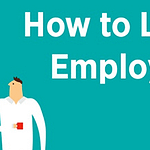Employers will roll out the red carpet for new hires, but the same can’t be said for employees that leave, who often have to complete the employee offboarding process themselves. In some cases, exit interviews are performed as an afterthought, or not at all.
Even worse, a performative exit interview benefits absolutely nobody involved – neither the employee leaving, nor the company who may benefit from listening to the (former) employee’s thoughts and reasons for leaving.
In fact, a company’s lack of proper offboarding procedures may indicate broader company culture issues such as employee engagement, retention, and productivity.
While it’s easy to dismiss employees who resign as “weak-willed” or “not cut out for the role”, the reality is that many employees leave due to a lack of motivation and/or a lack of company culture fit. And your offboarding process and exit interviews can help reveal why employees are leaving, and help you spot potential issues that might affect other employees in the future.
In this article, we’ll take a look at how employers can improve their offboarding process, and more importantly, why it matters.
Poor offboarding can be detrimental
A vindictive employer who neglected the offboarding process may seek revenge on their past employees, even if they’ve done everything right. What results is a lose-lose situation.
being Expected to Quit the “Right Way”
83% of HR managers say that the way a person quits affects their future career opportunities, but this statistic holds little weight when there’s no accepted way to quit. The rules often change at the whims of employers, but despite this, employees often do more than what’s required.
It’s estimated that 78% of employees give notice before their departure, even when they don’t have to. Employees will voluntarily train their replacement, express gratitude for the role, and attend exit interviews to obtain a good reference. However, there are no guarantees in business.
lying to Remove Earned or Unearned Negative References
If employees seem to be leaving on good terms, then why do 62% of hiring managers hear bad feedback from past employers? Why do 3 in 10 employers find fake references on applications?
It’s simple: employees know that their past employers hold their future in their hands. One angry employer can ruin their chances of getting a good job, which may force them to stretch the truth.
However, this behaviour and a lack of proper offboarding policies can come back to bite the employers.
Toxic Offboarding Can Come Back to Haunt You on Employer Review Sites
Employees may feel little incentive to stick with any offboarding terms you offer, from crafting the parts that make up a resignation letter to sticking around until you find a replacement. If you’ve burned other employees in the past, they won’t feel the need to support you in the transition.
Whatever you do in your organisation doesn’t stay private for long. Once people know you have difficulties offboarding staff, quality talent will avoid you and your organisation like the plague.
importance of Employee Offboarding
Employee onboarding is the first step to employee engagement. Unfortunately, too much focus is placed on first impressions when it’s the last impression that holds the most weight.
Employees Can Act as Company Advocates
When an employee decides to leave a company, they either become an advocate or antagonist.
Advocates will speak highly of your company, whereas an antagonist won’t recommend your company to anyone. An antagonist will speak negatively about your company and burn bridges you could have built in their wake. If you make enough people angry, your reputation will suffer.
We all want our employees to sing our praises, but not because they’re forced to. A great offboarding process will ensure your past employees say positive things about your company.
Boomerang Employees Offer Several Benefits
No one said that your employee relationships have to end when they depart. You’re more likely to attract boomerang employees (re-hires) if they had a positive offboarding experience. Rehires can be very beneficial to your organisation’s ROI and culture, as you don’t have to re-train them.
It’s important to note that an employee offboarding process isn’t enough to entice others to return. You need to focus on employee wellness from the time a person is hired at the company.
Non-Boomerang Employees Also Offer Benefits
Even if they never come back, a solid employee offboarding process can turn past hires into:
- Customers
- Suppliers
- Mentors
- Brand ambassadors
The organisation, employer, and employee only stand to benefit from the right offboarding process. Not only is it practical from a business standpoint, but it’s also crucial for data security.
20% of organisations say they’ve experienced data breaches from past employees. Always remember that a vindictive employee can harm your reputation, so it’s best to avoid that.
How to help employees Offboard
Based on our findings in the previous sections, it makes more sense to help employees leave without burning bridges. Here’s how to turn the offboarding process into a win-win situation.
1. Understand Why They’re Leaving
Employees aren’t required to tell you why they’re leaving. However, you can use this info to convince them to stay. After expressing that you’re sad to see them go, ask, “is there anything I can do to make you stay?” If they don’t explain, you can try again after the exit interview.
2. Communicate Departure Terms
Any offboarding step your employees make is done as a courtesy, but this can make them miss the mark in your eyes. If you require them to stay 4 weeks instead of 2 weeks, make sure it’s in their contract. If you have specific offboarding expectations, make sure they’re well aware.
3. Notify the Employee’s Team
Once the employee’s exit is made official, inform the employee’s team, as well. Make sure this is done as soon as possible to avoid rumours. Tell the team what they need to know to complete their duties, such as the date they’re leaving and the required transition plan.
4. Have a Transition Plan in Place
Create detailed guidance for team members who’ll take part in the transition. This document should include how to perform specific tasks, use certain software, and work on existing projects. Tweak your core performance driver during this time to avoid performance dips.
5. Provide an Offboarding Checklist
Take ambiguity out of the equation by providing an offboarding checklist to existing employees. This checklist should indicate the steps and things they need to complete before they leave the company. This will make the process appear less rushed and keeps your employee organised.
6. Ensure All Paperwork is Signed
Similar to the onboarding process, there’s a lot of paperwork your departing employees need to sign. Employee offboarding paperwork could include severance packages, non-disclosure agreements, non-compete agreements, and retired after-unemployment benefits documents.
7. Collect Company Assets
On your employee’s last day of work, make sure physical company assets, such as a badge, keys, laptop, and credit card, are accounted for. If your employee uses their phone for work, ask the IT department to wipe it off company information. Disable all accounts from your database.
8. Alert Important Stakeholders
Ask your HR team to notify other departments and stakeholders once your employee has left. Payroll needs to know your employee’s last day, so they can process their last paycheck and relocation fees. If they had clients, introduce them to the person taking over their projects.
9. Conduct an Exit Interview
The vast majority of businesses are conducting exit interviews incorrectly. Exit interviews are often conducted by HR staff or a direct superior, which incentivises lying. If you want to get the most out of an exit interview, hire an external consultant who can identify any underlying issues.
10. Touch Base With Your Team
Whether the employee left on good or bad terms, their departure often shakes up the team. It’s essential to stay on top of employee morale during the transition and try to help them if they have to take on more responsibilities. Take the necessary steps to keep them motivated.
In Conclusion…
Employee offboarding may sound like an awkward or alien concept, and to many employers, it is. However, employers should create a friendly offboarding process that helps both parties stay connected, engaged, and on good terms. Otherwise, things can and surely will backfire. Your organisation can’t survive without happy employees, whether they’re working with you directly or they’ve since moved on. Commit to developing lasting advocates for your business.
Author: Rupert Jones – Owner at Finance Rupert Consulting
Photo credit: Van Tay Media on Unsplash




